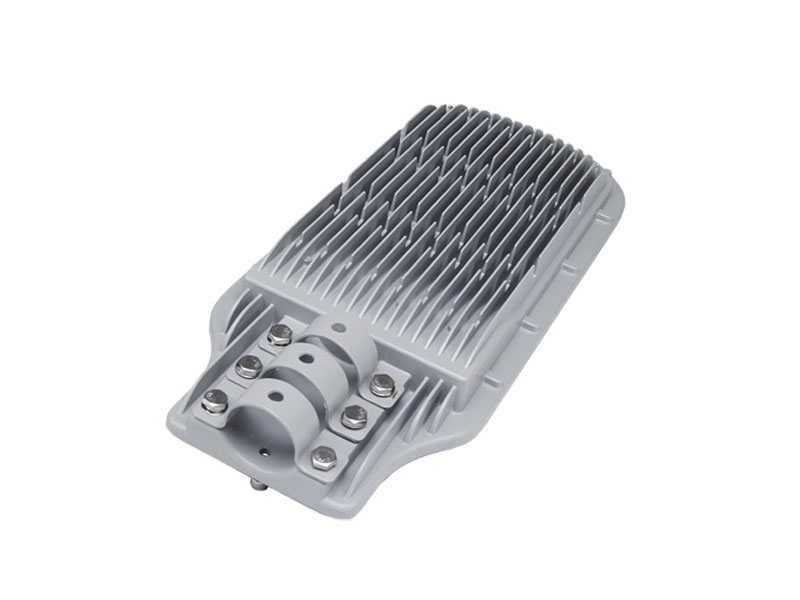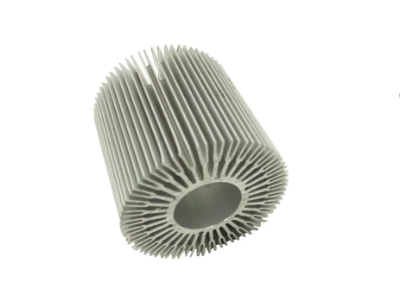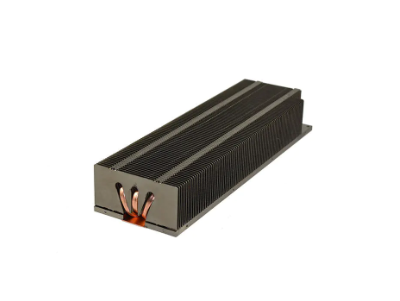Currently, the biggest technical challenge for LED lighting fixtures is heat dissipation. Poor heat dissipation can lead to issues with LED drivers and electrolytic capacitors, becoming a bottleneck in the further development of LED lighting and causing early aging of LED light sources.
In fixtures using LV LED light sources, since LED light sources operate at low voltage (VF = 3.2V) and high current (IF = 300–700mA), they generate a significant amount of heat. Traditional fixtures often have limited space, making it difficult for small-area heat sinks to dissipate heat quickly. Despite various cooling solutions, the results are often unsatisfactory, making heat dissipation a persistent challenge for LED lighting. Finding simple, easy-to-use, high thermal conductivity, and low-cost heat dissipation materials remains an ongoing effort.
Currently, LED light sources convert about 30% of electrical energy into light energy, with the remainder converted into heat. Therefore, quickly dissipating this heat is a key technical challenge in the structural design of LED fixtures. Heat needs to be dissipated through thermal conduction, convection, and radiation. Efficiently removing heat is essential to lower the internal temperature of the LED fixture, protect the power supply from prolonged high temperatures, and prevent early aging of the LED light source due to long-term high temperatures.
Heat Dissipation Methods for LED Lighting Fixtures
Because LED light sources do not emit infrared or ultraviolet light, they lack radiation-based heat dissipation. Therefore, LED lighting fixtures must rely on heat sinks closely combined with LED light boards to dissipate heat. Heat sinks must have the functions of thermal conduction, convection, and radiation.
Any heat sink must not only conduct heat quickly from the heat source to the surface of the heat sink but also rely on convection and radiation to dissipate the heat into the air. Thermal conduction only addresses the transfer of heat, while convection is the primary method for heat dissipation. The heat dissipation performance is mainly determined by the surface area, shape, and strength of natural convection, with thermal radiation serving a supplementary role.
Generally, if the distance from the heat source to the heat sink surface is less than 5mm, heat can be transferred if the material's thermal conductivity is greater than 5. Other heat dissipation must rely primarily on convection.
Most LED lighting sources still use low voltage (VF = 3.2V) and high current (IF = 200–700mA) LED chips. Due to high heat generation during operation, heat sinks with high thermal conductivity, such as aluminum alloys, are required. Common types include die-cast aluminum heat sinks, extruded aluminum heat sinks, and stamped aluminum heat sinks.
Die-Cast Aluminum Heat Sinks
Die-cast aluminum heat sinks are made using pressure casting technology. Liquid zinc-copper-aluminum alloy is poured into a die-casting machine, where it is cast into a heat sink with a shape defined by the pre-designed mold. Die-cast heat sinks are cost-effective but have limitations in making thin heat fins, which affects the heat dissipation area. Common materials used are ADC10 and ADC12.

Extruded Aluminum Heat Sinks
Extruded aluminum heat sinks are formed by extruding liquid aluminum through a fixed mold and then machining the resulting bars into the desired heat sink shape. Post-processing costs are higher. The heat fins can be made very thin, allowing for the maximum expansion of the heat dissipation area. The heat fins naturally form air convection during operation, providing better heat dissipation. Common materials include AL6061 and AL6063.

Stamped Aluminum Heat Sinks
Stamped aluminum heat sinks are created by stamping and stretching steel or aluminum alloy sheets with a punch and mold, forming cup-shaped heat sinks. These heat sinks have smooth inner and outer edges but limited heat dissipation area due to the lack of fins. Common aluminum alloys used are 5052, 6061, and 6063. Stamped parts are lightweight and have high material utilization, making them a low-cost solution.
Aluminum alloy heat sinks have ideal thermal conductivity and are suitable for isolated switch-mode constant current power supplies. For non-isolated switch-mode constant current power supplies, the fixture's structural design must ensure proper isolation between AC and DC, high-voltage and low-voltage power sources, to pass CE or UL certification.

Plastic-Coated Aluminum Heat Sinks
These heat sinks feature an aluminum core coated with thermally conductive plastic. The thermally conductive plastic and aluminum core are molded together in a single process, with the aluminum core requiring pre-processing. The heat from the LED chip is quickly conducted to the plastic, which uses its multiple fins to create air convection and radiates some heat from its surface. Plastic-coated aluminum heat sinks generally use the inherent white and black colors of the thermally conductive plastic. Black plastic-coated heat sinks have slightly better radiative heat dissipation. Thermally conductive plastic is a thermoplastic material with good flowability, density, toughness, and strength, suitable for injection molding. It has excellent thermal and cold shock resistance and insulation properties. Thermally conductive plastic has a better radiative coefficient compared to ordinary metals.
Thermally conductive plastic has a density about 40% lower than die-cast aluminum and ceramics. For the same shape, a plastic-coated aluminum heat sink can be nearly one-third lighter than an all-aluminum heat sink. Additionally, processing costs are lower, processing cycles are shorter, and the processing temperature is lower. The final product is less likely to break, and customers can use their own molding machines for customized designs. Plastic-coated aluminum heat sinks have good insulation properties and are easy to meet safety regulations.
High Thermal Conductivity Plastic Heat Sinks
High thermal conductivity plastic heat sinks have developed rapidly recently. These are all-plastic heat sinks with thermal conductivity several times higher than ordinary plastics, reaching 2-9 W/mK. They offer excellent thermal conduction and radiation capabilities and can be used in various power LED fixtures. They are suitable for 1W to 200W LED lighting applications.
High thermal conductivity plastic can withstand AC voltages up to 6000V, making it suitable for non-isolated switch-mode constant current power supplies and high-voltage LED (HVLED) linear constant current power supplies. This makes LED lighting fixtures easier to pass stringent safety tests such as CE, TUV, and UL. HVLEDs operate at high voltages (VF = 35-280VDC) and low currents (IF = 20-60mA), resulting in reduced heat generation. High thermal conductivity plastic heat sinks can be manufactured using traditional injection molding and extrusion machines.
These heat sinks have high surface finish and greatly improved manufacturing efficiency, with flexible design possibilities to fully realize designers' concepts. High thermal conductivity plastic heat sinks are made from PLA (corn starch) and are fully biodegradable, leaving no residue or chemical pollution. The production process does not involve heavy metal pollution, wastewater, or exhaust, meeting global environmental standards.
The PLA molecules in high thermal conductivity plastic heat sinks are densely packed with nanoscale metal ions, which move rapidly at high temperatures, increasing thermal radiation energy. Their performance surpasses that of metal heat sinks. They can withstand high temperatures (up to 150°C for five hours) without cracking or deforming, and, when paired with high-voltage linear constant current IC driver solutions, eliminate the need for electrolytic capacitors and large inductors, significantly extending the lifespan of the LED fixture. Non-isolated power supply solutions are efficient and cost-effective, particularly suitable for fluorescent lamps and high-power industrial lights.
High thermal conductivity plastic heat sinks can be designed with many thin, precise heat fins, maximizing the heat dissipation area. The heat generated by the LED chips is quickly transferred to the fins and dissipated through air convection and surface radiation. High thermal conductivity plastic heat sinks are lighter than aluminum, with a density of 1420 kg/m³ compared to aluminum’s 2700 kg/m³, making them about half the weight. They are also easier to process, with reduced molding cycles by 20-50%, lowering the cost.








